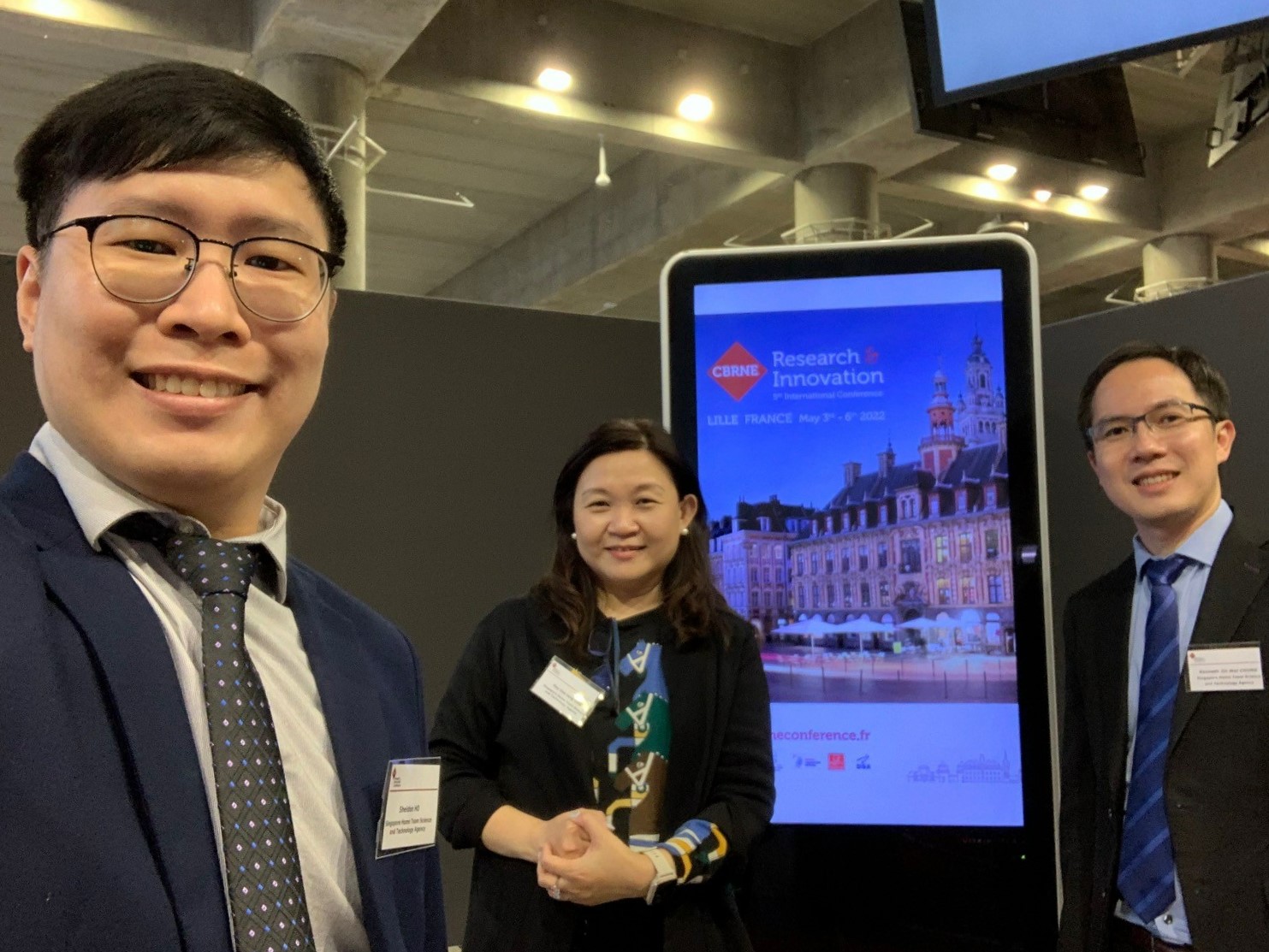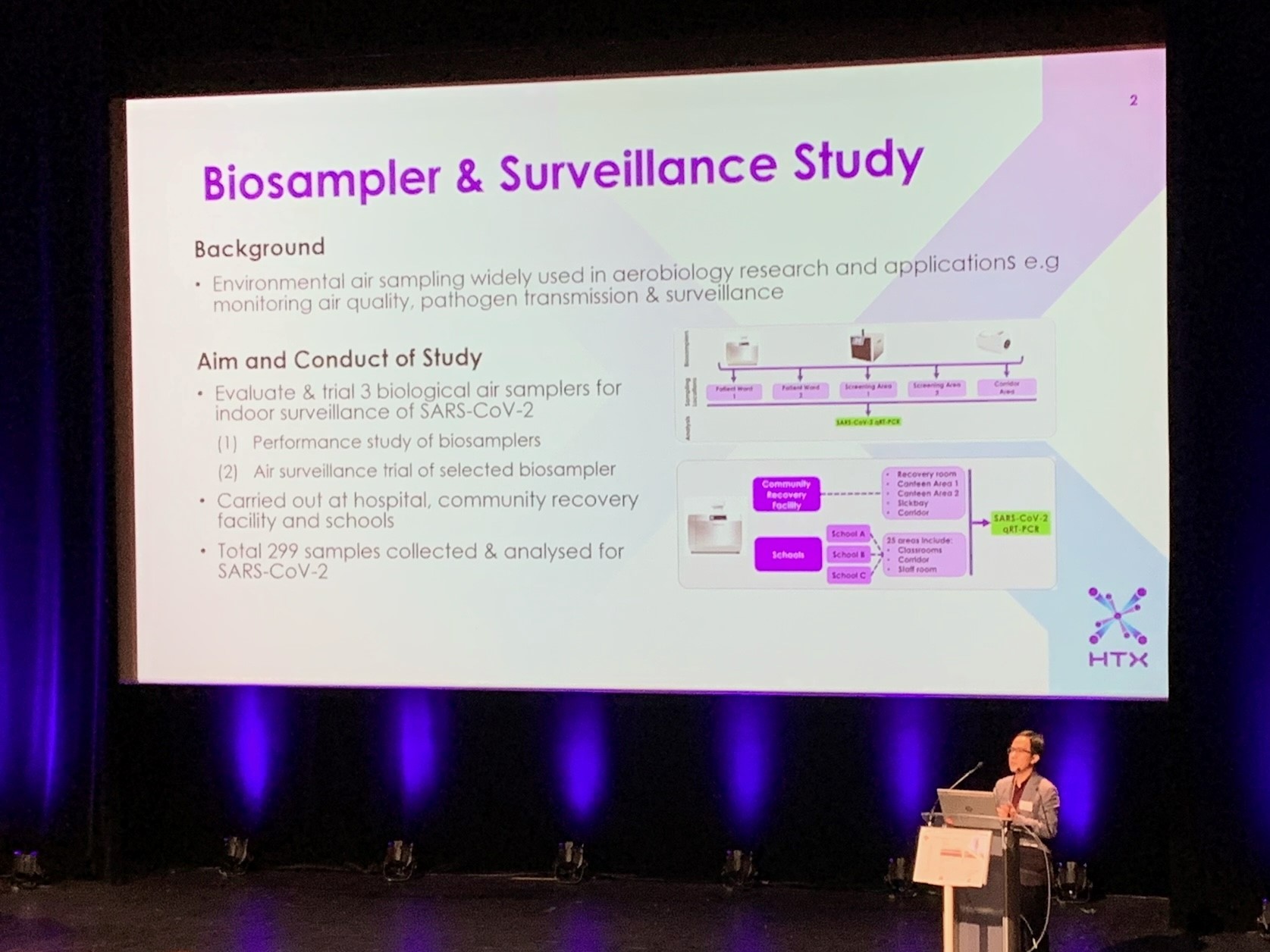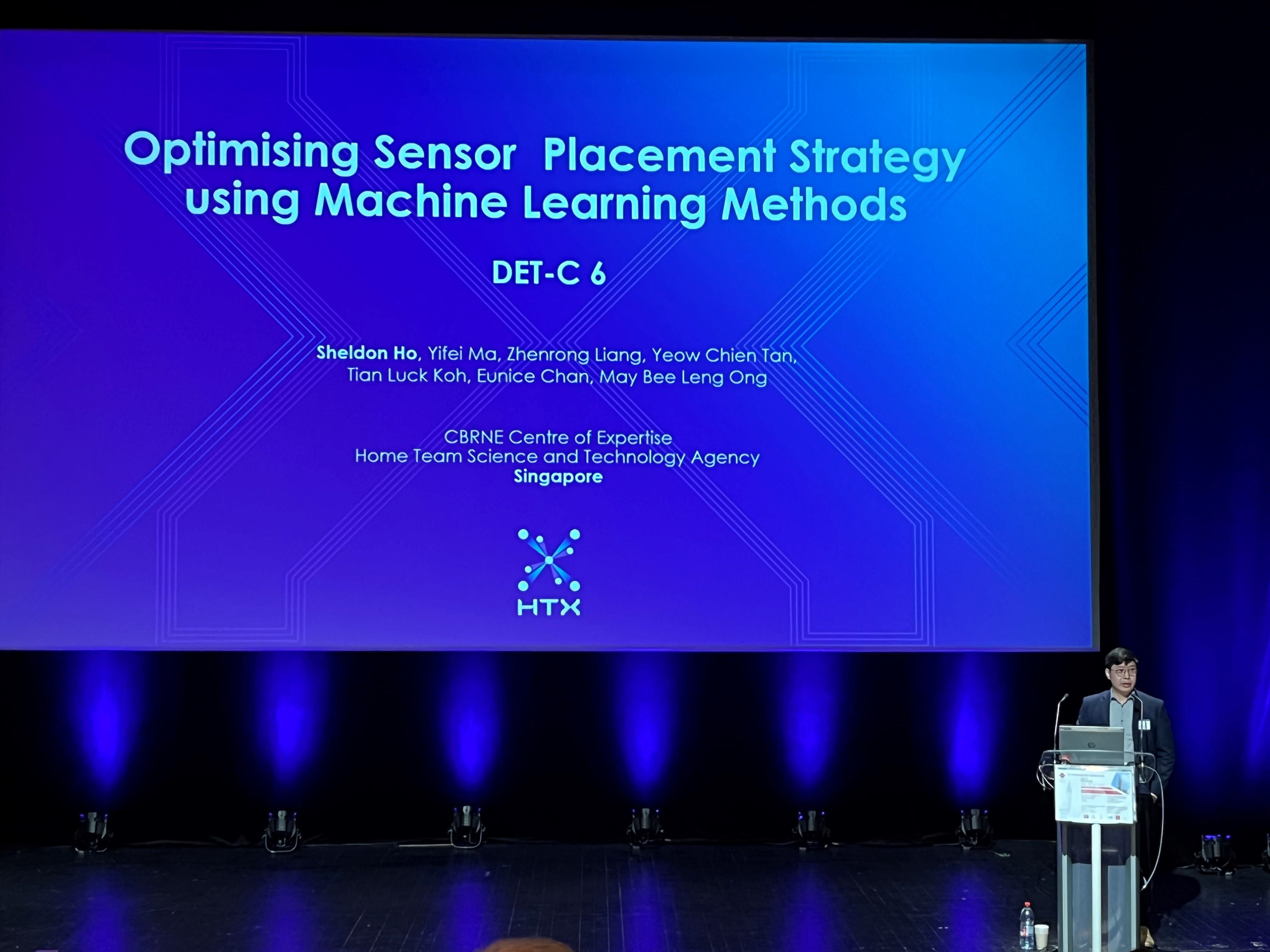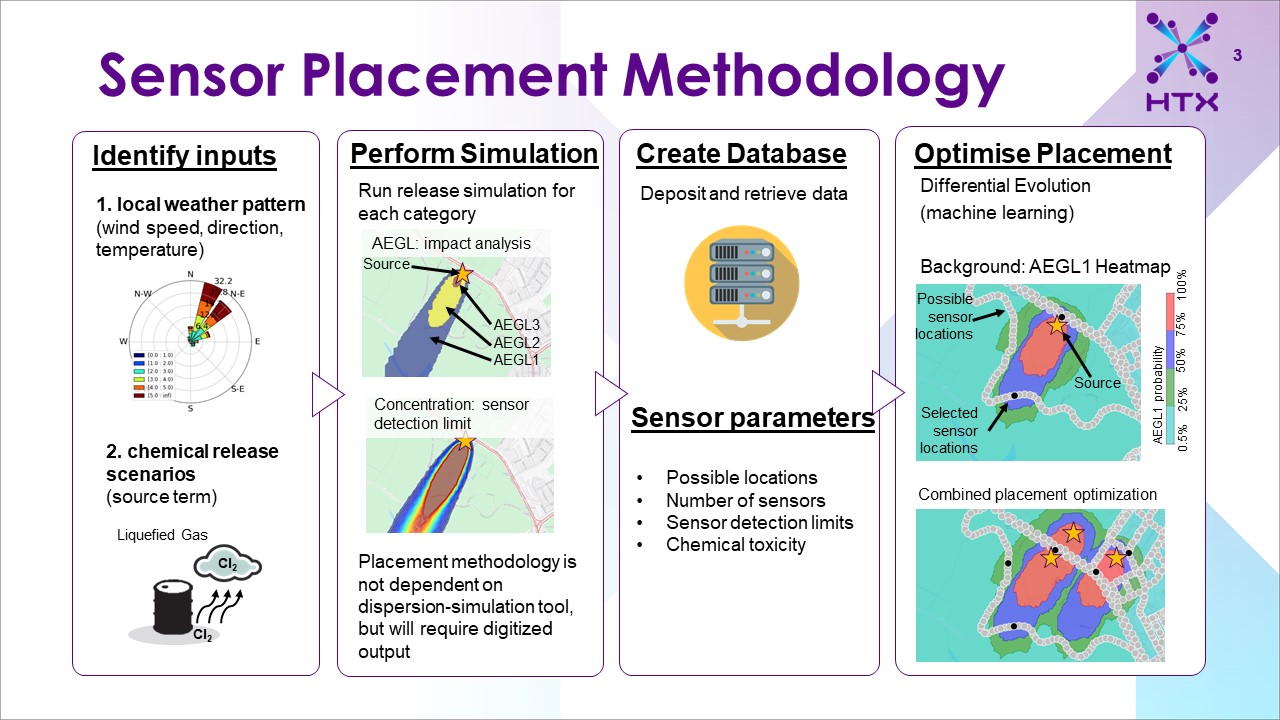
Scientists from HTX’s CBRNE Centre of Expertise (CoE) showcased their work on bio-surveillance and the strategic placement of sensors for the early detection of chemical threats at the international conference on CBRNE Research and Innovation (R&I) held in Lille, France from May 3 to 6.
The conference brought together 500 scientists, responders, and industry leaders from around the world to share knowledge and insights about the current and emerging research and innovation technologies in the CBRNE – Chemicals, Biological, Radiological, Nuclear, and Explosives – domain. About 26 countries were represented at the conference this year.
Biological air samplers in bio-surveillance
Dr Kenneth Chung, Senior CBRNE Scientist (Research), presented a study on HTX’s recent work on bio-aerosol surveillance involving biological air samplers. These are equipment used for air monitoring that draw air from the surrounding environment, capture the airborne particles, and analyse the samples collected.
 Dr Kenneth Chung presenting his research on biological air sampling and surveillance at the conference (Photo: HTX/ Sheldon Ho)
Dr Kenneth Chung presenting his research on biological air sampling and surveillance at the conference (Photo: HTX/ Sheldon Ho)
The study, which was initiated at the height of the COVID-19 pandemic, assessed the effectiveness of three biological air samplers for the surveillance of SARS-CoV-2 virus particles in indoor environments such as a hospital, community recovery facility, and schools. The differential bio-sampling effectiveness for SARS-Cov-2 was found to be likely influenced by the bio-sampling mechanism of the bio-sampler, environmental conditions, and analysis methods.
“Air sampling is an effective way for bio-aerosol surveillance and is very relevant in the CBRNE context to monitor potential bio-aerosol threats in the environment,” Kenneth explained. “We want to monitor such threats for early detection so as to perform timely follow-up actions such as containment and mitigation.”
Optimising the deployment of CBRNE sensors

Dr Sheldon Ho speaking on CBRNE sensor placement methodologies at the conference (Photo: HTX/ Kenneth Chung)
In another presentation, Dr Sheldon Ho, CBRNE Engineer (Technology Deployment), spoke about optimising the placement of CBRNE sensors using machine learning methods.
Sheldon, whose work focuses on chemical threats, explained that the inputs for building a robust machine learning model to optimise the deployment of CBRNE sensors included local weather patterns such as wind speed, direction, temperature, as well as chemical release scenarios and the sensor parameters.
The machine learning algorithm would select the best sensor location for capturing the possible threat. The algorithm could also be used for multiple chemical sites to optimise sensor sharing.
“Certain problems can be difficult to solve with traditional algorithm programming, but machine learning can help to reduce time spent on programming and aid our work in the strategic deployment of CBRNE sensors,” Sheldon said.
 Screengrab of Dr Sheldon’s Ho presentation on “Optimising Sensor Placement Strategy using Machine Learning Methods”
Screengrab of Dr Sheldon’s Ho presentation on “Optimising Sensor Placement Strategy using Machine Learning Methods”
Exchanging industry insights
The conference was also an opportunity for the team to meet existing and new industry players as well as engage with CBRNE experts.
“We have gained a lot of knowledge and insights from the meeting and are happy to refresh our network with gurus in the CBRNE field and companies working on the new and transformative technologies,” said May Ong, Director of CBRNE CoE.
Read related article: eNose: The Nose that Knows